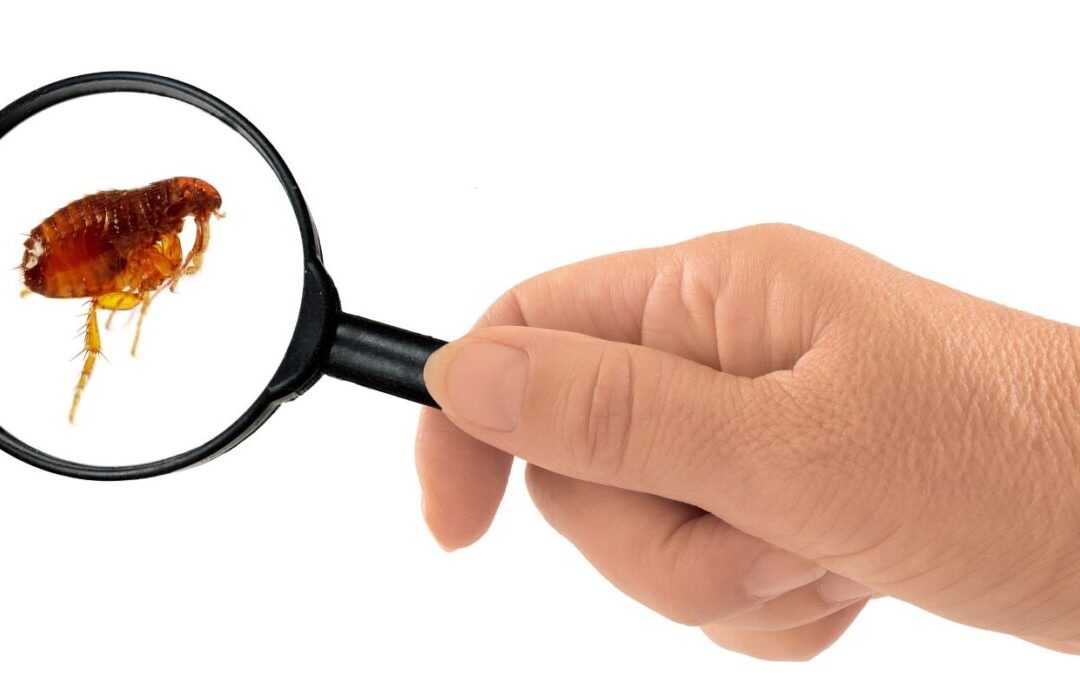Fleas in Florida are a summertime staple. Who are we fooling? In the warm Florida climate fleas rarely go away. They don’t disappear in the winter like they do up north. But during the summer, the fleas in Florida are in their heyday!
So, what exactly are fleas anyway, other than a colossal nuisance and potential danger?
Fleas are a class of wingless insects from the order Siphonaptera; they are parasites that live exclusively by consuming the blood from a host – likely your dog or cat and occasionally your ankles!
There are more than 2,000 species of fleas. Evolution has helped them specialize and adapt to feeding on specific animal hosts. For example, there are cat fleas, dog fleas, and human fleas, as well as fleas that feed exclusively on singular species of rats, birds, and other animals.
Unlike other parasitic insects that have the help of wings to aid in their search for a host, fleas really have to leap into action. Fleas are mega-Olympic athletes when it comes to the high jump. Fleas, which average between 1/6 to 1/8 of an inch in length, are capable of a vertical leap of seven inches, and a distance of more than a foot. For a six-foot human, this would be the equivalent of a jump 160 feet high and 295 feet long.
The best leapers are the fleas that have adapted to feed on large animals like horses and livestock. Fleas that feed on animals that fly or nest have not developed the leaping skills of their cousins.
The flea life cycle has four stages.
Egg: An adult female flea is pretty prolific. She can lay up to about 40 eggs a day (20-30 is pretty common). The eggs are laid on the host animal but will quickly fall off to land on things like pet bedding, carpet, wood floors, upholstery, etc. Inside a home, the eggs typically hatch within about two to three days.
Larva: When the eggs hatch, the larvae emerge. These tiny worm-like creatures feed primarily upon flea feces in the environment (this is essentially dried blood) and unhatched eggs. The larva goes through three stages of growth before it spins a cocoon and enters the pupal stage. The larval stage typically lasts from 5 to 15 days under the conditions found within most homes. So this means those larvae are crawling unseen in your home.
Pupa: Within its cocoon, the pupa begins its transformation into an adult flea. The cocoons are nearly indestructible and attract dirt and debris that camouflage them. Pupae can remain dormant in the environment for many months. Hence, the importance of cleaning thoroughly when you try to rid your home of fleas. Fleas in the pupa stage will generally not emerge until they sense the warmth or pressure of a nearby host.
Adult flea: The newly-emerged flea jumps on the host and begins feeding as quickly as possible. A female flea will usually begin to lay eggs within two days of her first blood meal. She defecates blood from her host that will fall off the host along with the eggs, restarting the life cycle. Adult fleas typically live for about a week or two on pets but can survive much longer under ideal, artificial conditions.
Now that you know the life cycle of a flea, you can understand why some dogs get infested with fleas soon after moving into a new home or visiting a new place that has been free of pets for a few months. The pupae emerge as soon as they sense a host. One dog can suddenly have hundreds of fleas that seem to have come out of nowhere! Within a couple of days, the fleas are reproducing like crazy and the infestation can seem out of control.
Why do fleas bite?
Fleas bite in order to survive. Why else would they do it? They are not trying to hurt you on purpose. Fleas have been known to store blood 15 times more than their weight and they need blood two to three times per day. Flea bites on humans are usually caused by fleas on cats and dogs, and are usually very itchy and sometimes painful, appearing as small red bumps with a red halo around the bite. This reaction is actually caused by the flea’s saliva. Flea bites come in clusters or groups of about four and can even appear in a straight line. These bites are common on the ankles and legs, even around the waist, armpits, torso, and in the folds of elbows and knees. Some people are more sensitive than others and may have a risk of getting hives or developing a rash from flea bites, and some can even have a serious allergic reaction even from a single bite.
What can you do about Fleas in Florida?
None of this is pleasant and, in fact, fleas in Florida and elsewhere can pose a danger to you and your loved ones, not just the furry ones!
There are ways to treat your pets, your home, and your yard with over the counter remedies. You can use natural home remedies and be sure to follow your veterinarian’s advice. But to actually rid your home of fleas you must commit to a fairly arduous process of treatment and cleaning, followed by several more rounds of treatment and cleaning, of both your home and your yard. A thoroughly cleaned and treated home can be invaded pretty quickly by a couple of fleas hitching a ride on a host.
Maybe we can help.
We are always happy to talk with homeowners about their options for treating their homes. There are a variety of ways we can help with in-home and yard treatments to rid you of fleas in Florida. Give us a call and let us “hop” to it!

